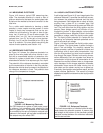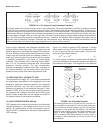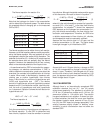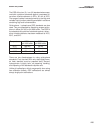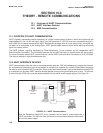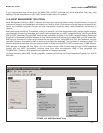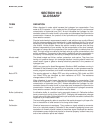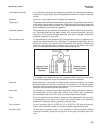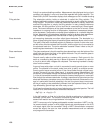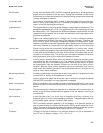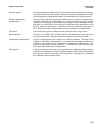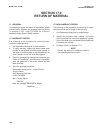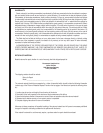
132
MODEL 3081 pH/ORP SECTION 16.0
GLOSSARY
pH Although pH is often defined as the negative common logarithm of the hydrogen
ion activity, pH is best defined by describing how it is measured. The measure-
ment requires three steps. Assemble an electrochemical cell consisting of a glass
electrode, a reference electrode, and the solution. Calibrate the cell by measur-
ing the voltage of two standard buffer solutions. Finally, measure the cell voltage
with sample present. Because voltage is directly proportional to pH, the pH of the
sample can be calculated from the calibration data. The operational definition
places the pH of the sample on the pH scale defined by the buffers.
Platinum electrode A platinum electrode is a noble metal electrode commonly used for measuring
ORP. The potential developed at the electrode is directly proportional to the ratio
of the concentrations of oxidized and reduced substances present in the sample.
pH influences the ORP.
Platinum RTD As the name implies, platinum is the sensing element in a platinum RTD. Platinum
RTDs are usually identified in terms of their resistance at 0°C. The resistance of
a platinum RTD changes +0.39% per °C.
Preamplifier A preamplifier, located in either the sensor or in a junction box close to the sen-
sor, boosts the signal from the sensor before sending it to the analyzer. Generally,
if the pH signal is to be sent more than about 15 feet, it should be preamplified.
Process display The process display of the Model 3081pH/ORP transmitter continuously shows
the basic measurement (pH or ORP), the temperature, and the output signal.
Prompt Prompts guide the user through calibrating and programming the transmitter.
Prompts identify the parameter being edited and request the user to enter a num-
ber or to select a setting.
Reduction Reduction is the gain of electrons. For example, when an iron (III) ion becomes
an iron (II) ion, it gains an electron: Fe
+3
+ e
-
= Fe
+2
.
Reference electrode A reference electrode maintains a stable potential independent of the pH or ORP
of the sample. The reference electrode also contains a reference junction that
electrically connects the electrode with the sample. The silver-silver chloride elec-
trode is the most common reference electrode in industrial and laboratory appli-
cations. The electrode consists of a piece of silver wire plated with silver chloride
in contact with a solution of concentrated potassium chloride.
Reference impedance The reference impedance is the overall resistance of the reference electrode to
the flow of current through it. Generally, as the reference junction becomes coat-
ed and plugged, the reference impedance increases.
Reference offset When the transmitter reading is forced to match the reading from a second pH
meter, the transmitter calculates the difference between its reading and the sec-
ond meter and converts the difference to voltage. The difference is the reference
offset. If the reference offset exceeds the programmed limit, the transmitter will
not adjust the pH reading.
Reset Resetting the transmitter ends the current operation without saving data and
returns the transmitter to the process display. Reset does not return the transmit-
ter to factory default setting.
RTD RTD is an acronym for resistance temperature detector.
Salt bridge A salt bridge provides an electrical connection between two electrolyte solutions
without permitting the solutions to mix. The classic salt bridge is a U-shaped tube
filled with gelled potassium chloride and plugged at both ends with a porous mate-
rial. When the ends are inserted in separate beakers an electrical connection is
formed between the beakers. See the definition of electrochemical cell.
Shield A shield is a metal braid that encloses the insulated signal carrying wire. The
shield protects the signal wire from extraneous signals.



